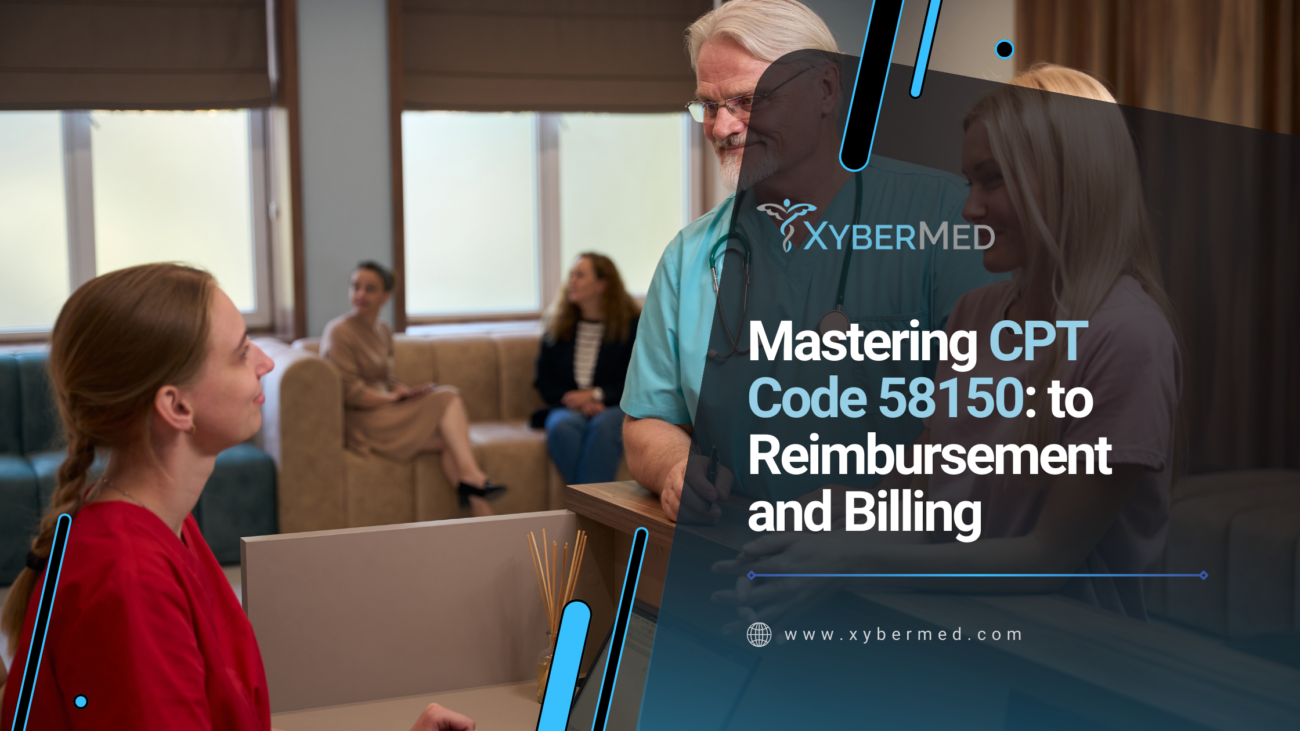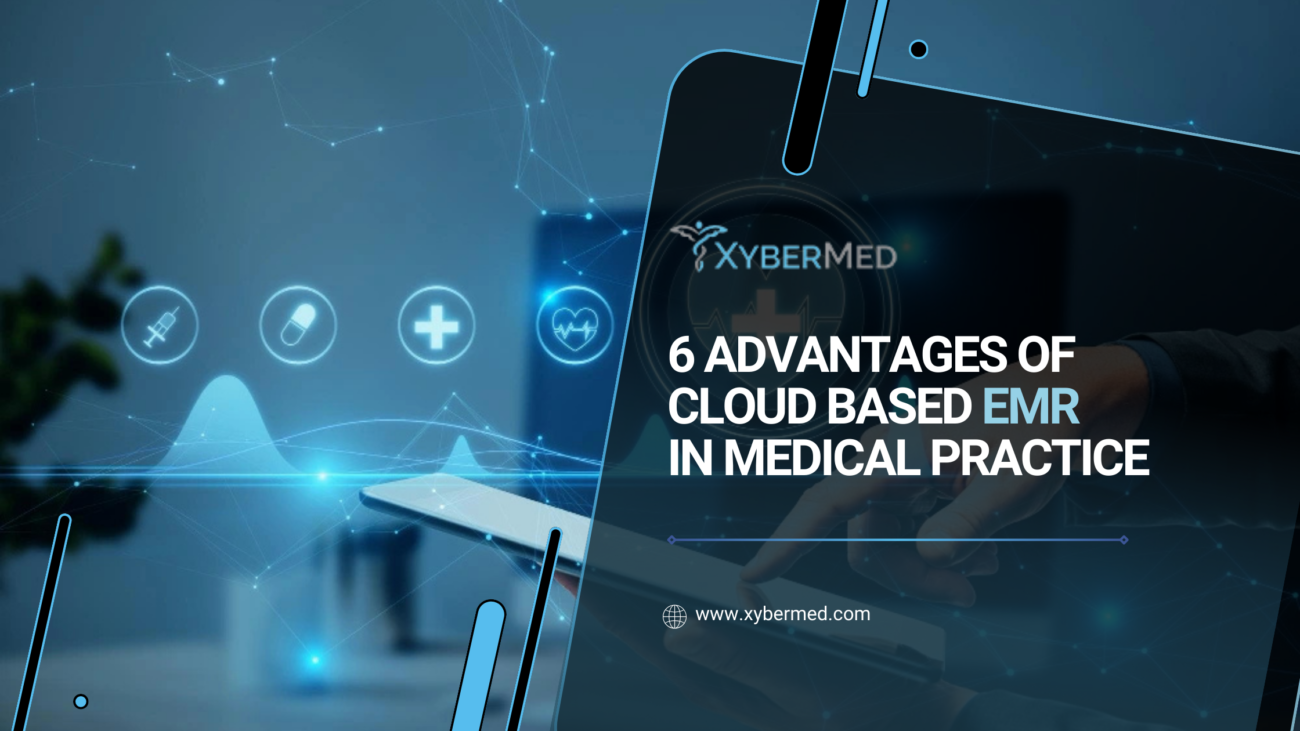Effective medical billing and coding are as important to a gynecologist as surgical skills. In the case of total abdominal hysterectomy, CPT code 58150 is indispensable. Mastering its correct application guarantees timely payments and contributes to both clinical and financial stability in your practice.
This manual separates all that you must know regarding CPT 58150—its definition, actual surgical situations, modifiers, and billing rules. Let’s get started.
Understanding CPT Code 58150
CPT code 58150 is classified under Hysterectomy Procedures, as listed by the American Medical Association (AMA). It refers to a total abdominal hysterectomy, i.e., the physician removes both the cervix and uterus through an abdominal incision.
Based on the patient’s condition, the procedure may also include partial or complete removal of the ovaries and the fallopian tubes.
When is CPT Code 58150 Used?
Let’s walk through some real-life situations where this procedure is required.
1. Heavy Bleeding Due to Fibroids
Consider a female patient with debilitating menstrual bleeding and pelvic pain. An ultrasound detects several large fibroids. Following different initial therapies like medication and non-invasive treatments, the symptoms persist.
A total abdominal hysterectomy (CPT code 58150) is recommended by the gynecologist for relief that is long-term. During the operation, the cervix, the uterus, and both of the fallopian tubes are removed.
2. Chronic Pelvic Inflammatory Disease (PID) with Abscess
Now, consider a second female patient with a past history of pelvic inflammatory disease (PID) and develops a tubo-ovarian abscess. The abscess does not respond to intravenous antibiotics.
The gynecologist proceeds with a total abdominal hysterectomy (CPT code 58150) to remove the infected cervix, uterus, ovaries, and fallopian tubes and prevent future complications.
3. Endometrial Hyperplasia with Atypia
Case: A 62-year-old postmenopausal woman presents with postmenopausal bleeding. Biopsy is performed, and atypical endometrial hyperplasia, a precancerous growth, is detected.
Because of the high probability of cancerous development, the gynecologist recommends a total abdominal hysterectomy (CPT code 58150). During the procedure, the uterus, cervix, ovaries, and fallopian tubes are removed to eliminate any potential cancerous growth.
Modifiers for CPT Code 58150
Proper use of modifiers will provide correct billing and avoid claim denials. Here is the list of relevant ones:
- Modifier 22 – Use if the procedure takes much more time, effort, or resources than normal. Proper documentation must be done to support this.
- Modifier 51 – Reports that multiple procedures were done during the same session.
- Modifier 52 – This applies when the procedure is partially reduced or discontinued at the discretion of the physician.
- Modifier 59 – Assists in distinguishing the hysterectomy from other procedures done on the same day to avoid bundling errors.
- Modifier 78 – Used when the patient is brought back to the operating room for a related procedure in the postoperative period.
- Modifier 79 – Used when a second, unrelated procedure is done in the postoperative period.
- Modifier 80 – Used when an assistant surgeon is needed during the procedure.
- Modifier 82 – Used when an assistant surgeon is involved when a resident surgeon is not available.
- Modifier AS – Used when a non-physician assistant, e.g., physician assistant (PA), nurse practitioner (NP), or clinical nurse specialist (CNS), is involved in assisting the surgery.
Billing & Reimbursement Guidelines for CPT Code 58150
To facilitate proper billing and seamless reimbursements, adhere to these critical guidelines:
1. Complete Documentation is Paramount
For effective claims processing, your documentation must contain:
- Patient demographics
- Pre-operative diagnosis
- Clinical notes
- Pathology reports
- Operative reports
- Post-operative care details
- Documenting in detail and accurately avoids claim denial and delays in reimbursement.
2. Establish Medical Necessity
Payers need clear reason for procedures. Accurate documentation should correlate the patient’s symptoms and condition with a total abdominal hysterectomy’s medical necessity.
Some common diagnoses that support medical necessity are:
- Uterine fibroids
- Endometriosis
- Cancer or precancerous lesions
- Pelvic organ prolapse
- Always accompany the proper ICD-10 diagnosis code with CPT 58150 to make your claim stronger.
3. Review Payer-Specific Policies
Various insurance providers have unique billing guidelines and reimbursement practices. Always check:
- Coverage policies
- Coding guidelines
- Medicare Administrative Contractors (MACs) regional policies
- Keeping current prevents denials and ensures state compliance and payer-specific policy compliance.
4. Learn Bundling Rules
CPT 58150 contains more than one procedure already, so do not unbundle them in hopes of maximizing reimbursement. Inaccurate billing will result in:
- Claim denials
- Audits
- Legal ramifications
For instance, excision of ovaries and tubes is already reimbursed under CPT 58150 and is not supposed to be billed as an add-on
Conclusion
Let us have a quick recap of what we’ve seen so far. CPT code 58150 is for total abdominal hysterectomy, which is an essential gynecology procedure. We had actual cases of usage of this code such as for endometrial hyperplasia with atypia, chronic PID with abscess, and fibroid cause heavy bleeding. We also examined the necessary modifiers—22, 51, 52, 59, 78, 79, 80, 82, and AS—along with essential billing and reimbursement rules.
Accurate documentation, demonstrating medical necessity, and knowledge of payer-specific guidelines are essential to facilitate smooth claims processing and prompt payments. By following these best practices, you can optimize your billing process and minimize claim denials. If you need professional assistance with complex medical billing, join hands with experts at XyberMed to outsource.


